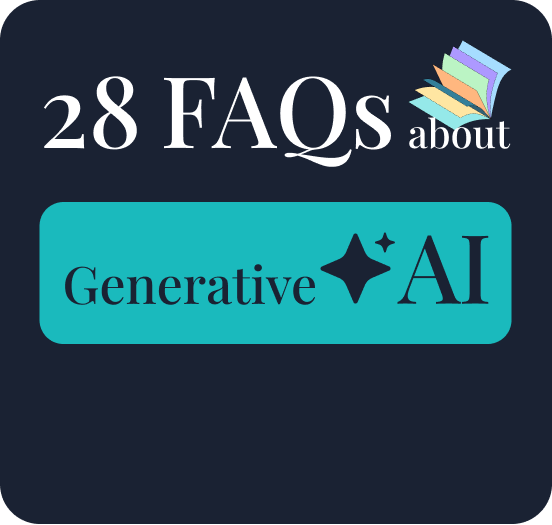Unlock Retention with These 10 CRM Strategies

Boosting customer retention is your most profitable strategy. Acquiring a new customer costs significantly more than keeping a current one. A small 5% increase in retention can boost profits by up to 95%. Your CRM is the key to building strong customer relationships and achieving this growth. In 2026, superior customer retention means using your CRM like never before.
Here are the ten essential strategies for customer retention management software you must master:
- Hyper-Personalization with AI from tools like Sobot AI
- Predictive Churn Analysis for Preventing Churn
- Proactive Customer Service Automation with a Sobot call center
- Omnichannel Consistency Through Your CRM
- Automated Customer Feedback Loops
- Gamified Loyalty Programs in CRM
- Customer Health Scoring in CRM
- Value-Driven Content for Retention
- Proactive Subscription and Renewal Management
- Community Engagement and Your CRM
This article explores how to implement these tactics for improved customer engagement and increased customer lifetime value. Effective crm and customer retention starts now with a powerful CRM.
Hyper-Personalization with AI
Generic marketing no longer works. Your customers expect you to understand their unique needs. Hyper-personalization with AI is the first step toward superior customer retention. It allows you to move beyond basic name-and-location tokens. You can now create truly tailored experiences that build lasting loyalty. This strategy is essential for boosting retention.
The Role of AI in CRM
Your CRM is a goldmine of customer data. AI unlocks its true potential. AI algorithms analyze vast datasets within your CRM from every touchpoint. This includes behavioral data like browsing history and transactional data like past purchases. The AI connects these points to uncover patterns. It helps you understand each customer on a deeper level. This process enables advanced personalization, turning your CRM into a proactive tool for building relationships and securing customer retention.
Implementing Personalization
You can implement personalization by using AI to create comprehensive customer profiles. Your CRM can then deliver personalized interactions at scale. This might include:
- Sending product recommendations based on a customer's recent activity.
- Offering unique discounts to a specific customer segment.
- Adjusting website content in real-time for each visitor.
These actions make every customer feel seen and valued. Businesses using this level of personalization have seen conversion rates increase by an average of 25%. This focus on the individual is key to improving retention.
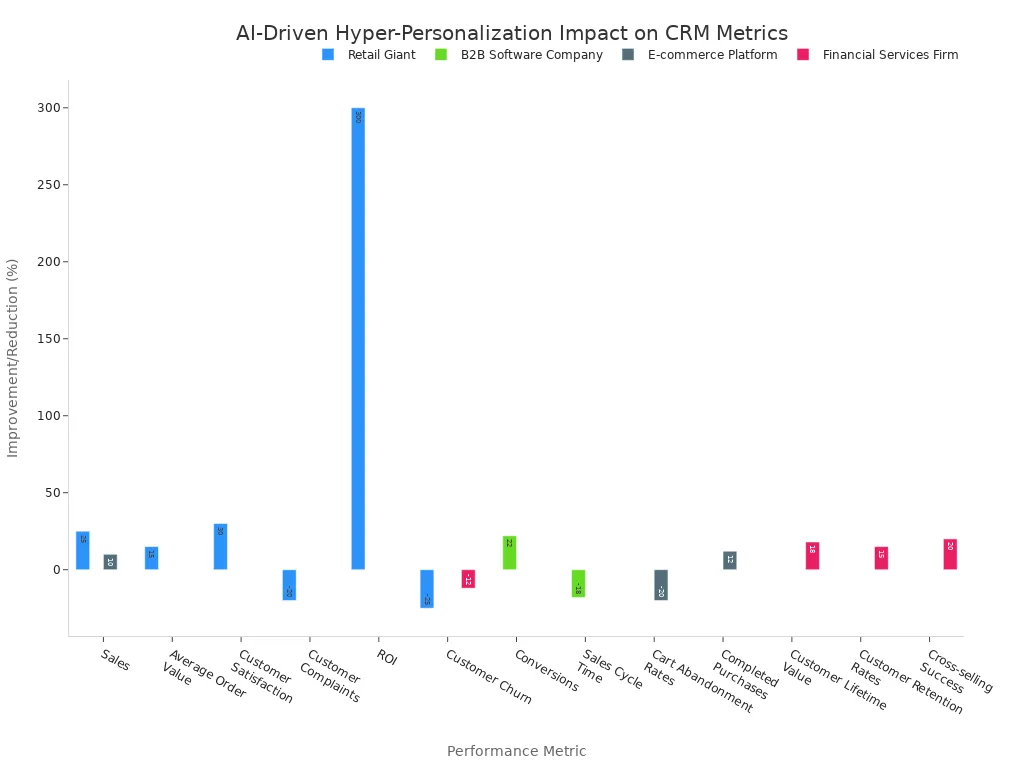
Measuring Loyalty Impact
How do you know your efforts are working? You must track the right metrics in your CRM. Measuring the impact of personalization on loyalty and retention is straightforward. Key performance indicators include:
- Customer Lifetime Value (CLV): The total value a customer brings over time.
- Retention Rate: The percentage of customers you keep.
- Net Promoter Score (NPS): A measure of customer satisfaction and loyalty.
Tracking these metrics shows the direct link between your personalization strategy and long-term customer retention. A well-executed strategy can increase revenue growth by 10-15%.
Predictive Churn Analysis for Preventing Churn
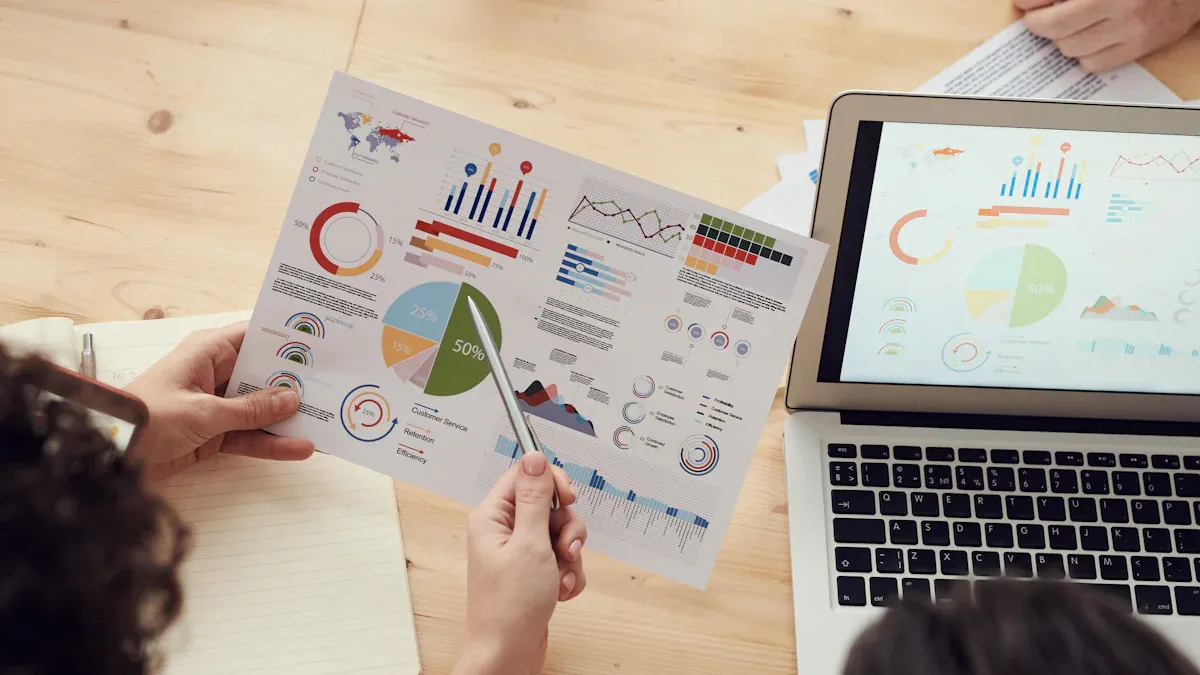
Losing a customer is costly, but you can often see it coming. Predictive churn analysis uses data to identify which customers are likely to leave. This allows you to act before they do. Businesses that use this strategy see great results. They report an average of 15% to 25% reduced customer churn. This proactive approach is essential for customer retention and is a core function of modern customer retention management software. Preventing churn starts with understanding the signs.
Understanding Predictive Models
Predictive models are the engines that power churn analysis in your CRM. These models use machine learning to analyze customer data and calculate a churn probability score for each customer. You do not need to be a data scientist to use them. Many CRM systems have these tools built-in. Common models include:
- AutoML
- Logistic Regression
- Random Forest
- Gradient Boosting Machines
These models examine historical data to find patterns linked to churn. This gives you a powerful tool for improving retention. Your CRM uses these insights for preventing churn effectively.
Setting Up Intervention Workflows
Once your CRM identifies an at-risk customer, you need a plan. Automated intervention workflows are your playbook for saving that relationship. You can set up triggers in your CRM to start a series of actions when a customer's churn score hits a certain level. For example, a high-risk customer might trigger an alert for a senior manager to call them personally. A low-risk customer might receive an automated email with helpful tips. These workflows ensure you respond quickly and appropriately, which is key to customer retention. This systematic approach to retention is a game-changer.
Key Data for Accurate Prediction
The accuracy of your churn prediction depends on the quality of your data. Your CRM is the central hub for this information. To get a clear picture, you must track several types of data. This includes a customer's purchase history, product usage frequency, support ticket history, and engagement with marketing materials. The more comprehensive your data, the more reliable your predictions will be. A well-maintained CRM provides the foundation for successful churn analysis and better customer retention.
Proactive Customer Service Automation
Waiting for a customer to complain is a losing strategy. Proactive service means you solve problems before they happen. This approach creates a seamless brand experience and significantly boosts satisfaction. In fact, modern proactive service can lead to a 40% improvement in customer satisfaction scores. This preemptive approach is a cornerstone of modern customer retention.
Identifying Proactive Moments
Your first step is to identify the right moments for outreach. Your CRM data reveals these opportunities. You can use timely communication to connect with your audience at key points in their journey.
Key Moments for Proactive Communication:
- Lifecycle-based: Guide a new customer through onboarding or send renewal reminders.
- Risk-based: Engage a customer when their product usage drops or their health score declines.
- Opportunity-based: Initiate conversations for upsells or invite a happy customer to an advocacy program.
Using AI with your CRM helps you spot dissatisfaction early, allowing for timely communication to resolve issues and improve retention.
Building Triggers in Your CRM
Once you identify key moments, you must build automated workflows in your CRM. You can set up triggers that launch a proactive communication sequence. For example, a drop in a customer's health score could automatically schedule a check-in call.
This is where a powerful tool like Sobot's Voice/Call Center becomes essential. You can use its Bulk Outbound Task feature to assign automated check-in calls to your team. With Smart Call Routing, you ensure the right agent connects with the right customer. This automation enables you to scale your proactive efforts, leading to improved customer satisfaction and better customer retention. Your CRM becomes the command center for this entire retention strategy.
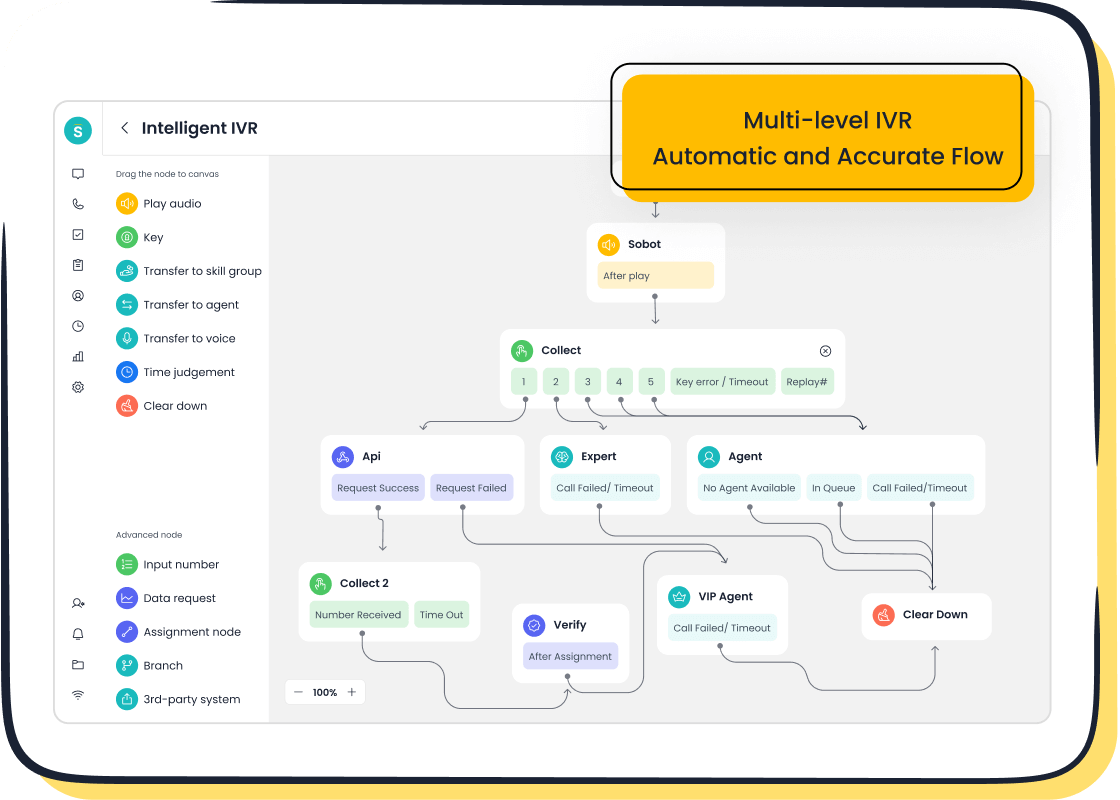
High-Impact Communication Examples
Effective proactive communication provides real value and strengthens your customer relationships. This timely communication shows you understand their needs. Here are a few high-impact examples:
- Anticipating Pain Points: Dropbox alerts users when they are close to their storage limit and offers solutions.
- Warning About Interruptions: Slack gives advance notice for scheduled maintenance, which manages expectations.
- Addressing Seasonal Needs: Home Depot sends winter preparation tips to customers in cold climates.
Each of these actions turns a potential problem into a positive interaction, reinforcing customer trust and driving long-term retention. This level of care is vital for customer retention, and your CRM makes it possible.
Omnichannel Consistency Through Your CRM
Your customers interact with you on multiple channels. They expect a consistent experience everywhere. A disconnected journey leads to frustration and hurts customer retention. Omnichannel consistency means providing a seamless, unified experience whether a customer calls, chats, or sends an email. Your CRM is the central hub that makes this possible, turning fragmented interactions into a single, continuous conversation that boosts retention.
Your CRM as a Single Source of Truth
Your CRM must act as the single source of truth for all customer data. It collects information from every touchpoint, creating a complete profile for each customer. When your team has access to this unified view, they can provide informed and consistent support. For example, a case study with a large institutional investor showed that implementing a unified CRM improved the quality and number of customer interactions. This approach optimizes business processes and enhances the customer experience, which is vital for retention. Your CRM eliminates data silos and empowers your team.
Unifying the Customer Experience
Unifying the experience is critical because 90% of customers expect consistency across channels. You need a solution that brings all communications into one place. An all-in-one contact center solution like Sobot unifies channels such as voice, live chat, and WhatsApp into a single workspace. This creates a seamless flow of information.
Take OPPO, a leading smart device innovator. They used Sobot to integrate global customer channels. This eliminated data fragmentation and improved service efficiency. The result was a remarkable 57% increase in their repurchase rate, proving the direct impact on customer retention.
Achieving this requires robust tools. Sobot’s status as an official WhatsApp Business Solution Provider (BSP) is crucial for modern omnichannel personalization and customer engagement strategies. This level of integration is key to effective customer retention management software.
Auditing Your Omnichannel Gaps
To improve, you must first identify your weaknesses. Regularly auditing your omnichannel strategy helps you find and fix gaps in the customer journey. Start by checking your omnichannel activities to ensure service is consistent across all platforms.
Next, gather feedback from two key groups:
- Your customer service team: They have firsthand insights into problem areas.
- Your customers: Their feedback reveals how they perceive your brand's experience.
Finally, conduct an audit of recorded complaints. This analysis pinpoints recurring issues and highlights opportunities for improvement. A thorough audit provides a clear roadmap for strengthening your engagement and retention efforts.
Automated Customer Feedback Loops
Listening to your customers is the most direct path to improving retention. An automated feedback loop systematically collects, analyzes, and acts on customer input. Your CRM is the engine that powers this entire process. It turns feedback from a simple suggestion box into a powerful tool for customer retention. This strategy of continuous post-sale engagement helps you solve issues, innovate your offerings, and build loyalty by showing each customer you are committed to their success.
Designing Post-Interaction Surveys
Effective feedback starts with asking the right questions at the right time. You should design your post-interaction surveys to be short and targeted.
Survey Best Practices:
- Timing: Send surveys after key moments, like a purchase or a support ticket resolution.
- Length: Keep surveys to 1-2 questions for quick feedback or 5-7 for more detail.
- Type: Use CSAT for immediate satisfaction, NPS for long-term loyalty, and CES for ease of experience.
Personalizing your survey communication can also boost response rates. For example, Slack saw a 31% increase in responses by adding a manager's signature to their invitations. This simple touch makes the post-sale engagement feel more human. Your CRM can automate this entire post-sale engagement process.
Automating Feedback Routing
Once a customer provides feedback, your CRM should immediately take action. You can set up rules to automatically route feedback to the right teams. For instance, a low satisfaction score can trigger an alert for your support manager. This ensures a swift response. One SaaS company reduced churn by 22% by automatically routing customers with low satisfaction scores to a live chat agent within 10 minutes. This rapid communication turns a negative experience into a chance to demonstrate your commitment. Your CRM makes this level of responsive post-sale engagement possible at scale.
Turning Feedback into Retention Actions
Collecting feedback is only the first step. The real value comes from using it to make improvements. Your CRM helps you analyze trends from customer feedback. You can see what features cause friction or what parts of your service create delight. Companies like Apple and Marriott use this data to refine their products and services, which directly boosts customer satisfaction and retention. Closing the loop is the final, crucial piece of post-sale engagement. Use your CRM to track these improvements and inform customers about the changes their feedback inspired. This communication shows you value their input and solidifies their relationship with your brand, making post-sale engagement a driver for long-term loyalty.
Gamified Loyalty Programs in CRM
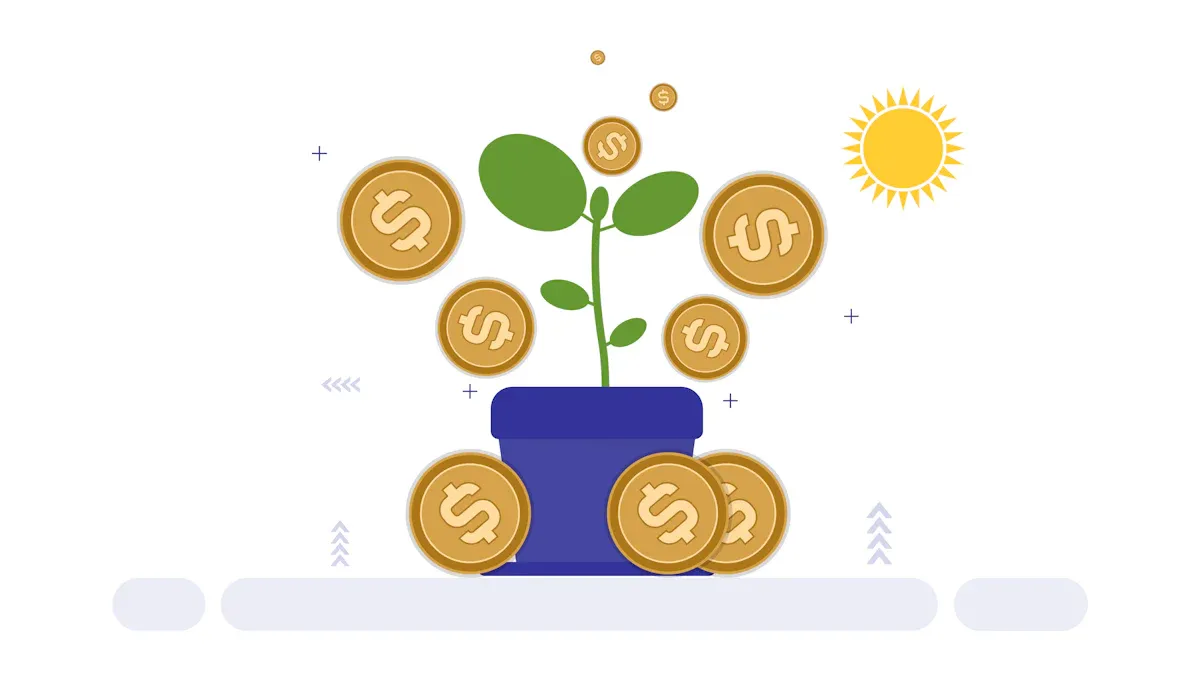
Traditional loyalty programs are not enough to secure customer loyalty. You can transform your customer retention strategy by making loyalty fun. Gamified loyalty programs use game-like elements to drive engagement and build a stronger emotional connection with your brand. Your CRM is the essential hub for managing these dynamic programs and turning participation into valuable data for retention.
Structuring Your Gamified Program
You can design your program to reward customers for more than just purchases. A well-structured program encourages a wide range of valuable behaviors. Your CRM helps you manage these complex structures. Consider incorporating these popular elements:
- Points and Perks: Award points for purchases, social shares, or completing profile information.
- Badges and Achievements: Give customers visual rewards for hitting milestones, like their fifth purchase or first product review.
- Leaderboards: Create friendly competition by ranking members based on their activity or points earned.
- Unlockable Tiers: Motivate customers to "level up" for better rewards and exclusive access.
These structures make participation feel like an accomplishment, which boosts engagement and loyalty.
Tracking Loyalty Data
Every action a customer takes within your gamified loyalty programs generates data. Your CRM is where you track and analyze this information. You can monitor points earned, badges unlocked, and challenges completed. This gives you a clear view of who your most engaged customers are.
Success in Action: TheCHIVE built a program that rewards users for photo uploads and social sharing. This strategy now accounts for 6% of their annual revenue and drives thousands of referrals each month.
Companies like Nestle and Pacific Coffee also saw huge success by using their CRM to manage gamified experiences, leading to more registrations and higher profits per customer. This data is the key to understanding what drives loyalty and retention.
Improving Service with Loyalty Insights
The data from your loyalty programs does more than track points; it reveals customer preferences and behaviors. You can use these insights from your CRM to enhance the customer experience and improve customer retention. By analyzing which rewards are most popular or which challenges drive the most activity, you can personalize future offers. This data-driven approach allows you to tailor marketing materials and even simplify the customer's path to purchase. Making your customer feel understood is a powerful driver of customer loyalty.
Customer Health Scoring in CRM
You can predict customer loyalty by measuring it. A customer health score is a metric that tells you how likely a customer is to stay with your business. Your CRM is the perfect tool to track this score. It helps you quantify customer satisfaction and predict long-term retention. This proactive approach is a cornerstone of modern customer retention.
Defining Health Score Metrics
To create an accurate health score, you must track the right data points. Your CRM gathers this information from various interactions. A comprehensive score gives you a full view of the customer relationship.
Key metrics to include in your health score are:
- Product Usage: How often a customer logs in and which features they adopt.
- Support Activity: The volume and type of support tickets they submit.
- Customer Feedback: Direct input from surveys like NPS or CSAT.
- Financial Indicators: Their invoice history and any upsell opportunities.
Tracking these elements in your CRM helps you understand customer engagement and loyalty.
Automating Health Scores
Manually calculating scores for every customer is impossible. You need to automate this process within your CRM. Your CRM can assign weights to different metrics and update the health score in real time. This automation allows your account managers to spot risks early. When a customer's score drops, the CRM can trigger an alert. This enables your team to intervene proactively and reduce the chance of churn. A powerful CRM turns data into an early warning system for retention.
A Key to Better Customer Retention
High customer health scores directly lead to better retention. These scores help you identify opportunities for growth and prevent churn before it happens. Customers who invest time in your product often have higher scores and stay longer. Your customer retention management software uses these scores to guide your strategy. By monitoring health scores in your CRM, you can take targeted actions to improve the customer experience. This focus on customer health is essential for building lasting loyalty and driving successful customer retention.
Value-Driven Content for Retention
Content is more than just marketing; it is a powerful tool for retention. You can provide ongoing value that keeps each customer connected to your brand. Your CRM is the central command for creating and delivering content that builds trust and reinforces your brand identity. This strategy gives customers a reason to engage repeatedly, fostering loyalty and driving customer retention.
Advanced Audience Segmentation
Effective content starts with knowing your audience. Your CRM allows you to move beyond basic demographics. You can use advanced segmentation to create highly specific customer groups.
Advanced Segmentation Techniques in Your CRM:
- Behavioral: Group customers based on their purchase habits and product usage.
- Psychographic: Segment by lifestyle, values, and interests to understand motivations.
- Technographic: Target users based on the technology they prefer, like mobile vs. desktop.
This micro-segmentation helps you craft precise messages. Your CRM processes extensive customer data to reveal these patterns, enabling you to create content that truly resonates.
Mapping Content to the Journey
Once you segment your audience, you must deliver the right content at the right time. Your CRM helps you map content to each stage of the customer journey. Personalized content makes a customer feel understood and valued. This builds strong emotional connections and increases brand loyalty. When you consistently deliver relevant content through your CRM, you build trust and familiarity. This focus on providing value turns one-time buyers into lifelong advocates and is key for long-term retention.
Measuring Content Engagement
You need to know if your content strategy is working. Your CRM provides the tools to measure engagement and its impact on retention. Tracking the right metrics shows you what content drives results.
Key metrics to monitor in your CRM include:
- Click-Through Rate (CTR): Measures how many people click on your links.
- Average Session Duration: Shows how long users stay on your pages.
- Customer Retention Rate: Directly links content engagement to business success.
Analyzing these metrics helps you understand what content improves customer engagement. This data-driven approach allows you to refine your strategy and prove the ROI of your efforts.
Proactive Subscription and Renewal Management
Securing renewals is the lifeblood of any subscription business. You can stop scrambling at the last minute by using your CRM to manage the process proactively. This approach transforms renewals from a stressful event into a predictable part of your customer retention strategy. A well-configured customer retention management software ensures no customer falls through the cracks, preventing revenue loss and reducing churn.
Automating the Renewal Process
Your CRM can automate the entire renewal journey. You can set up workflows that trigger based on specific events. This ensures timely and consistent communication with every customer. Automation removes manual effort and lets your team focus on building relationships.
Key Triggers for Renewal Automation in Your CRM:
- Date-based intervals (e.g., 90 or 60 days before renewal)
- Health scores dropping below a set threshold
- Negative feedback from a recent survey
- Changes in product usage or platform adoption
Once a trigger is activated, your CRM can automatically create a renewal deal, assign an owner, and start a sequence of value-driven communication. This systematic approach is essential for effective retention.
Identifying At-Risk Renewals
Your CRM is your early warning system for potential churn. It centralizes data that signals a customer might not renew. By monitoring key indicators, you can identify at-risk accounts long before their contract is up. This gives you valuable time to intervene and save the relationship. Look for red flags like a decrease in platform usage, late payments, or a key contact leaving the company. Your CRM can flag these accounts, allowing you to create a retention plan and open a direct line of communication to address their concerns.
Crafting Incentive Campaigns
When a customer is at risk of churn, a well-timed incentive can make all the difference. Your CRM helps you identify these customers and deliver personalized offers that encourage them to stay. This is a powerful tactic for customer retention. Instead of just offering a discount, you can get creative with your campaigns.
Consider these effective strategies:
- Offer a free gift or product testers with their next order.
- Provide alternatives to cancellation, like skipping a shipment or gifting an order.
- Use their purchase history to recommend personalized upsells.
This targeted communication shows the customer you value their business. It turns a potential cancellation into an opportunity to strengthen loyalty and secure long-term retention.
Community Engagement and Your CRM
Your most loyal customers can become your greatest asset. A brand community gives them a space to connect, share experiences, and build deeper relationships with your brand. Your CRM is the key to managing these relationships and turning community engagement into a powerful force for retention. This strategy fosters strong customer loyalty and transforms your user base into a network of advocates.
Integrating Community Platforms
You must connect your community platform to your CRM to unlock its full potential. This integration turns conversations into actionable data. Start with a single, clear goal, like identifying top contributors for a marketing campaign. Before you begin, ensure your data is clean by setting clear naming rules. You can use middleware tools like Zapier to bridge the two systems. This allows your CRM to track community activities, giving your sales and marketing teams valuable insights for better customer engagement. A well-integrated CRM provides a complete view of each customer journey.
Nurturing Brand Advocates
Your community is the perfect place to find and nurture brand advocates. You can identify these enthusiastic customers by tracking their engagement in your CRM. Look for frequent contributors or those with high satisfaction scores. Once you find them, build genuine relationships.
Cisco, for example, created a 'Community Spotlight Awards' program. This simple recognition significantly increased contributions from award winners.
You can recognize your advocates with exclusive perks or by featuring their stories. This makes your best customers feel valued and encourages them to share their positive experiences, strengthening their loyalty and building powerful social proof. These relationships are vital for long-term retention.
The Link Between CRM and Customer Retention
A thriving community directly improves customer retention. Research shows that 60% of consumers are more loyal to a brand because it offers community access. Your CRM helps you prove this link. By tracking community engagement alongside purchase history, you can see how participation impacts loyalty and lifetime value. This data is crucial for effective crm and customer retention. PowerSchool, for instance, used its community to achieve a 97% customer satisfaction score. When your CRM powers your community strategy, you create better customer engagement, build stronger relationships, and give every customer a reason to stay. This makes crm and customer retention a natural outcome of your efforts.
You now have ten strategies that create a powerful retention engine. The future of customer retention lies in a proactive, data-driven approach. Your CRM powers this entire process, turning data into loyalty and satisfaction. A well-utilized CRM is essential for effective crm and customer retention. This customer retention management software enhances customer engagement and communication. It helps you build strong customer relationships. Your CRM is the key to better communication, lasting relationships, and improved satisfaction. This approach to retention and loyalty is vital for success. Your customer retention management software and CRM are key for crm and customer retention. This ensures long-term retention.
Don't wait for 2026. Begin transforming your customer relationships today. Explore how Sobot's all-in-one contact center solution can help you implement these strategies and embark on your contact journey.
FAQ
How does a CRM improve customer retention?
A CRM centralizes all customer data. You can use this data to personalize communication, anticipate needs, and solve problems proactively. This deep understanding helps you build stronger relationships, which is the foundation of successful customer retention.
Which CRM retention strategy is most important?
All ten strategies work together. However, starting with Omnichannel Consistency provides a strong foundation. It ensures you deliver a seamless experience across all channels. This consistency builds trust and is crucial for any customer retention effort.
Can small businesses use these CRM strategies?
Yes. Modern CRM solutions like Sobot are scalable and affordable for businesses of all sizes. You can start with basic strategies like feedback loops and proactive service. Then you can expand your efforts as your business grows.
How quickly will I see results from a CRM strategy?
You can see immediate improvements in team efficiency and customer satisfaction. Long-term results like a significant increase in customer retention rates may take a few months. Consistency is the key to achieving lasting success with your CRM.
See Also
Essential Capabilities: Unlocking the Power of CRM for Your Call Center
Seamless Customer Journeys: A 10-Step Guide to Omnichannel Implementation
Elevate SaaS Customer Service: Strategic Live Chat for Enhanced Support
Discovering Customer Insights: The 10 Best VoC Software for 2024
Maximize Efficiency: Best Free CRM Solutions for Call Centers in 2024
